Alex Callender’s studio practice incorporates painting, drawing and installation to explore intersections between myth, identity and material culture. Through the visual forms of historical narrative, repurposed archival imagery, and speculative fictions, she considers questions of race and borders, environmental instability, and hybridized landscapes. Callender has exhibited nationally and internationally, and has held studio residencies with the Lower Manhattan Cultural Council, The Drawing Center’s Open Session program, the Art in Embassies Program, The Vermont Studio Center, Urban Glass, the Santa Fe Art Institute, Alice Yard in Trinidad, and DRAWinternational and The BAU Institute in France. Callender is an Assistant Professor of Art at Smith College and has been selected as research fellow at the Schomburg Center in 2021.
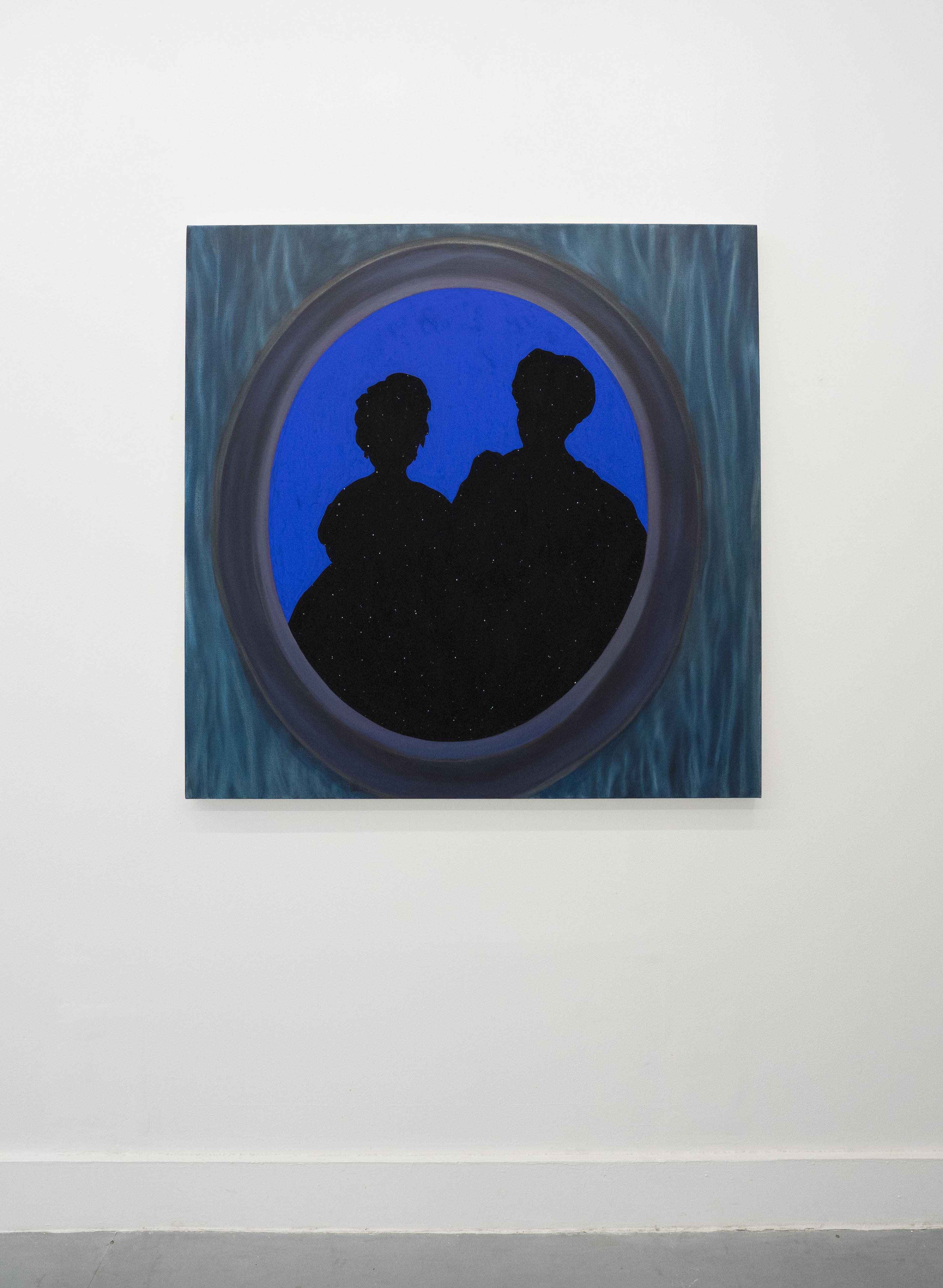




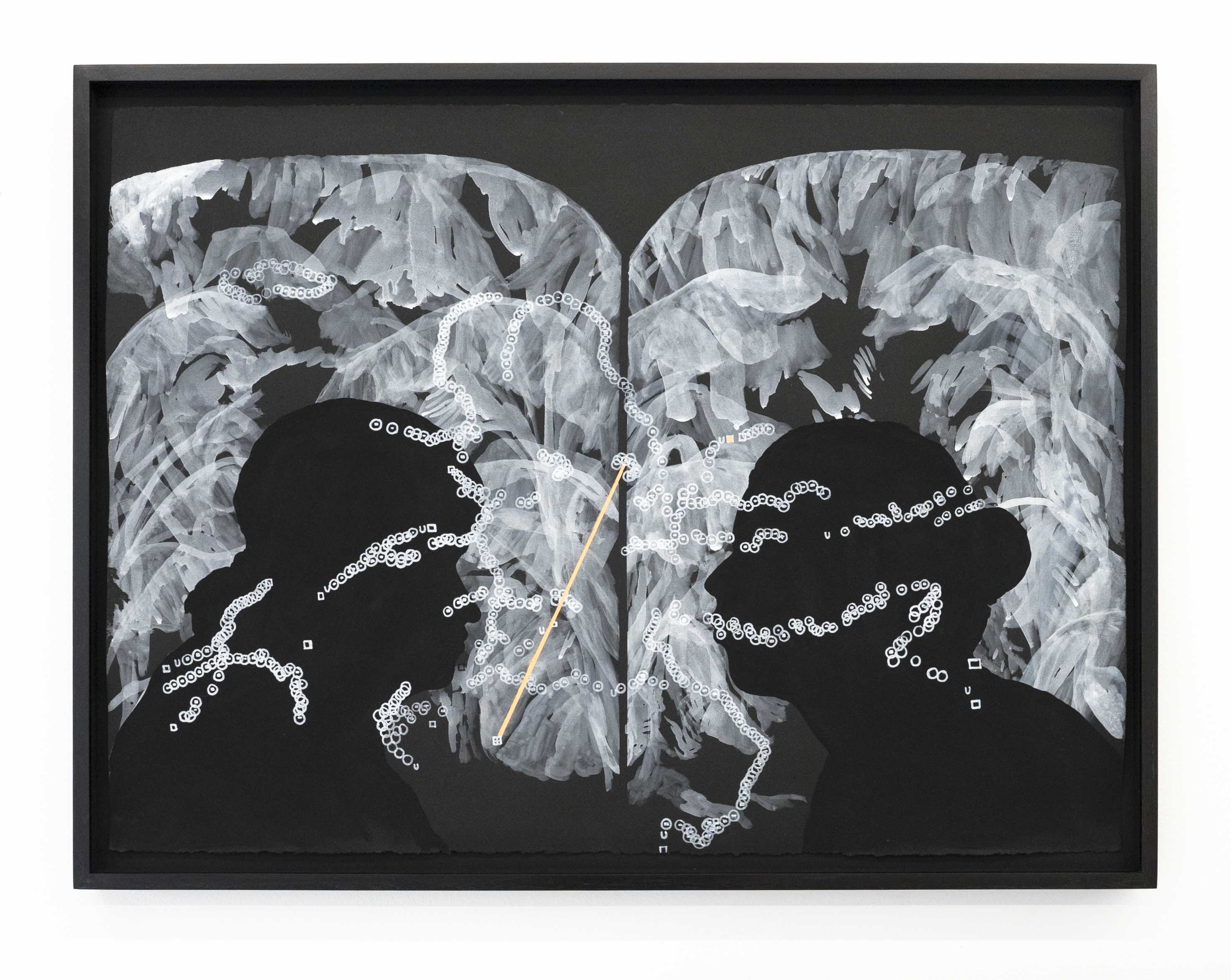
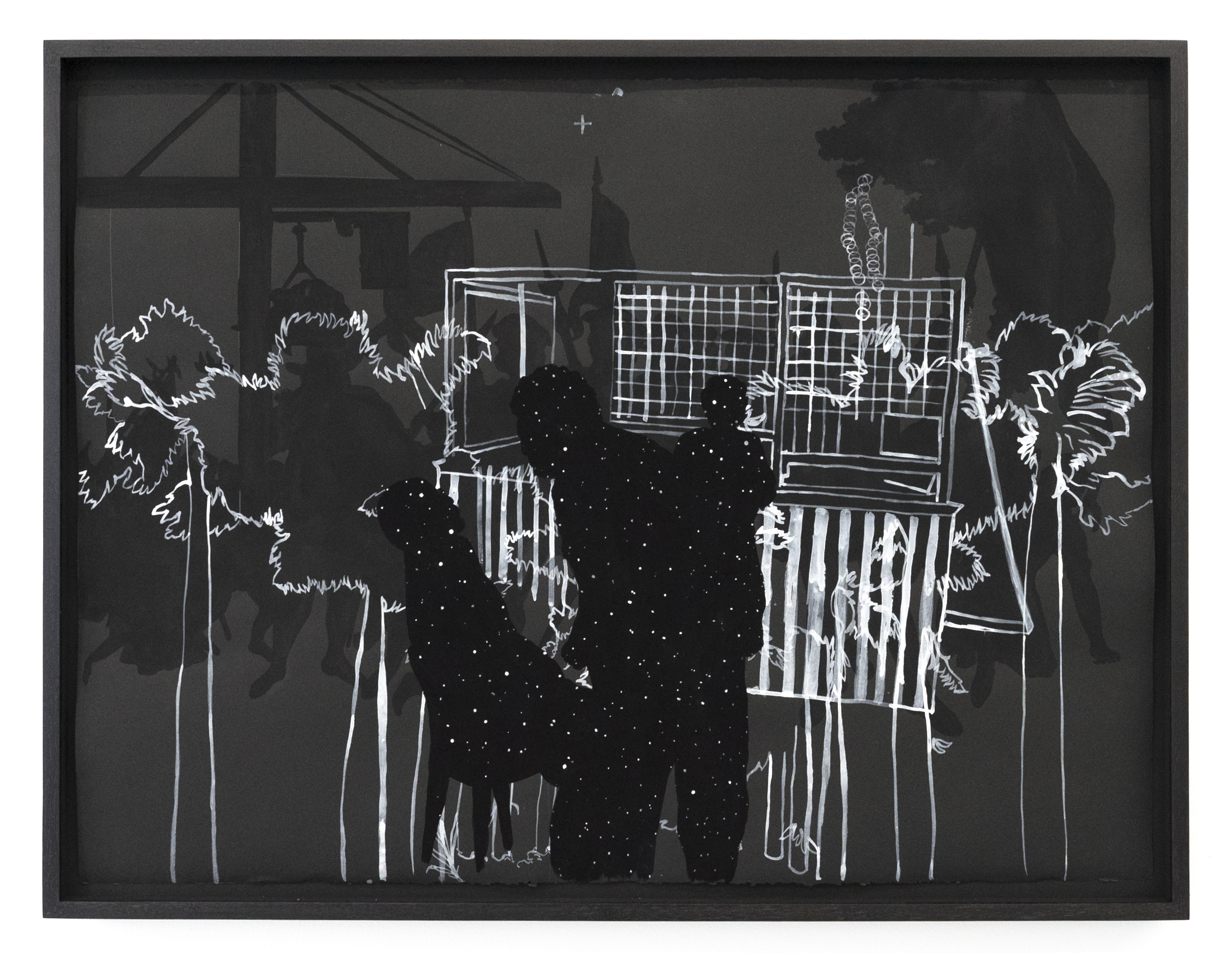
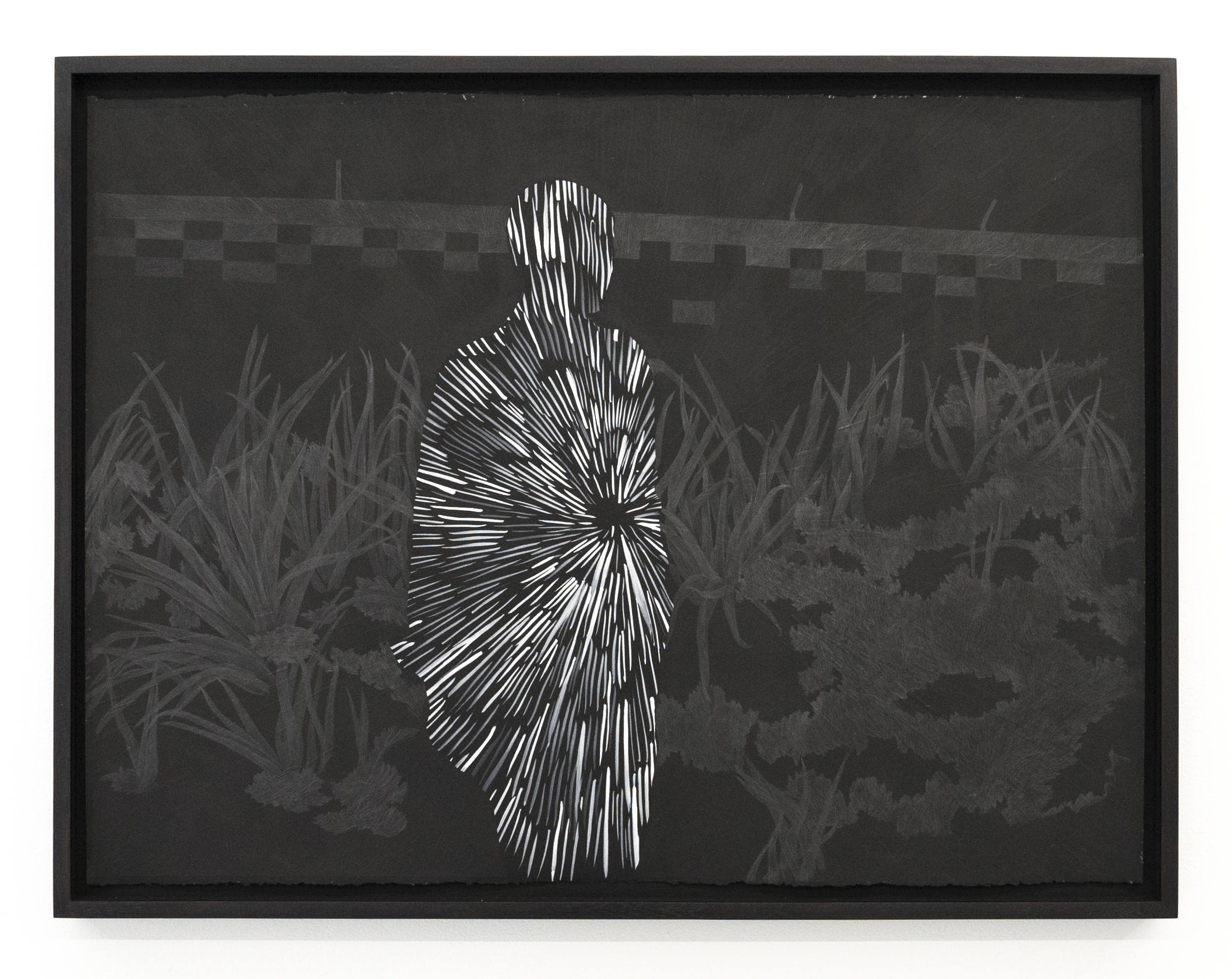
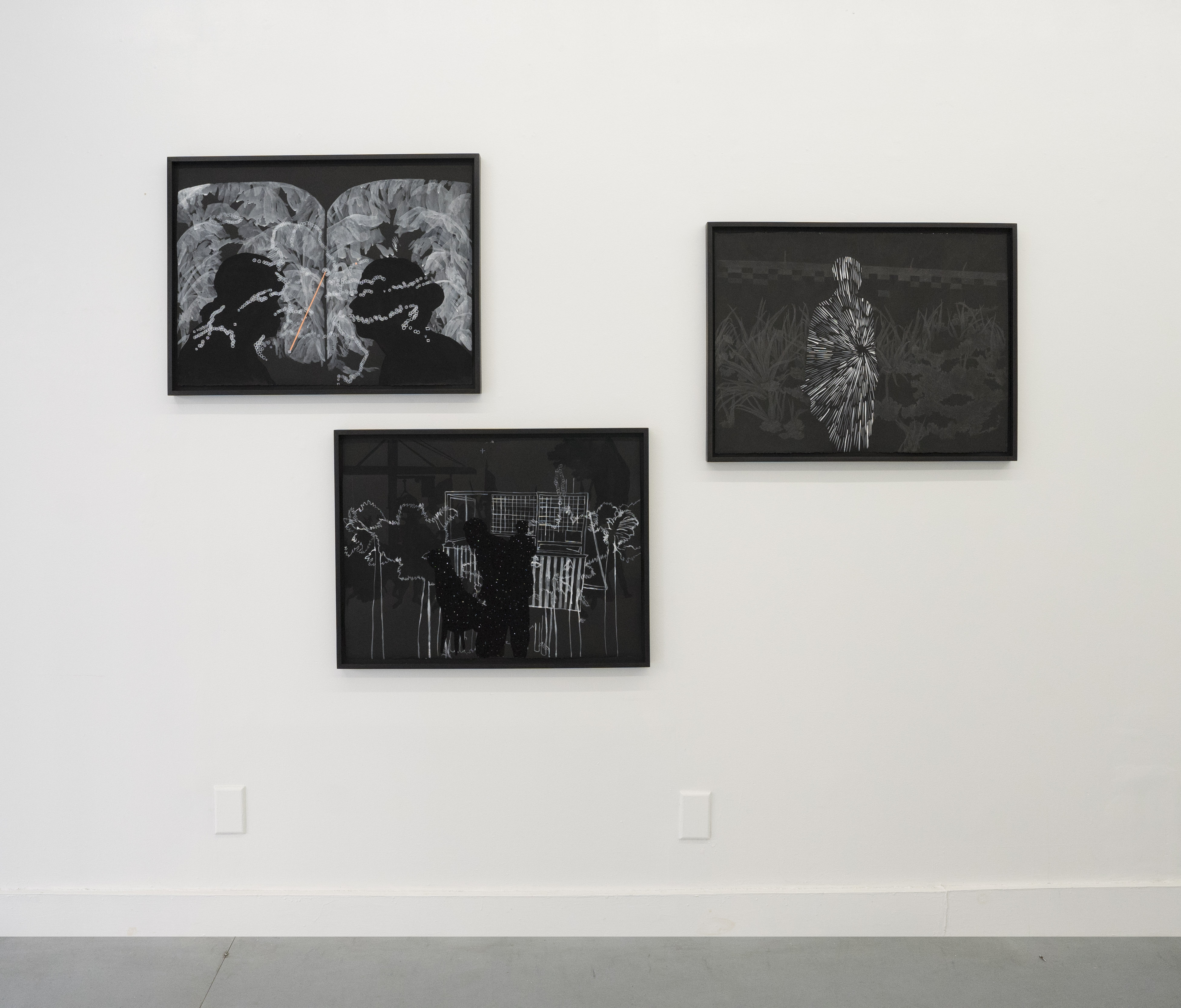
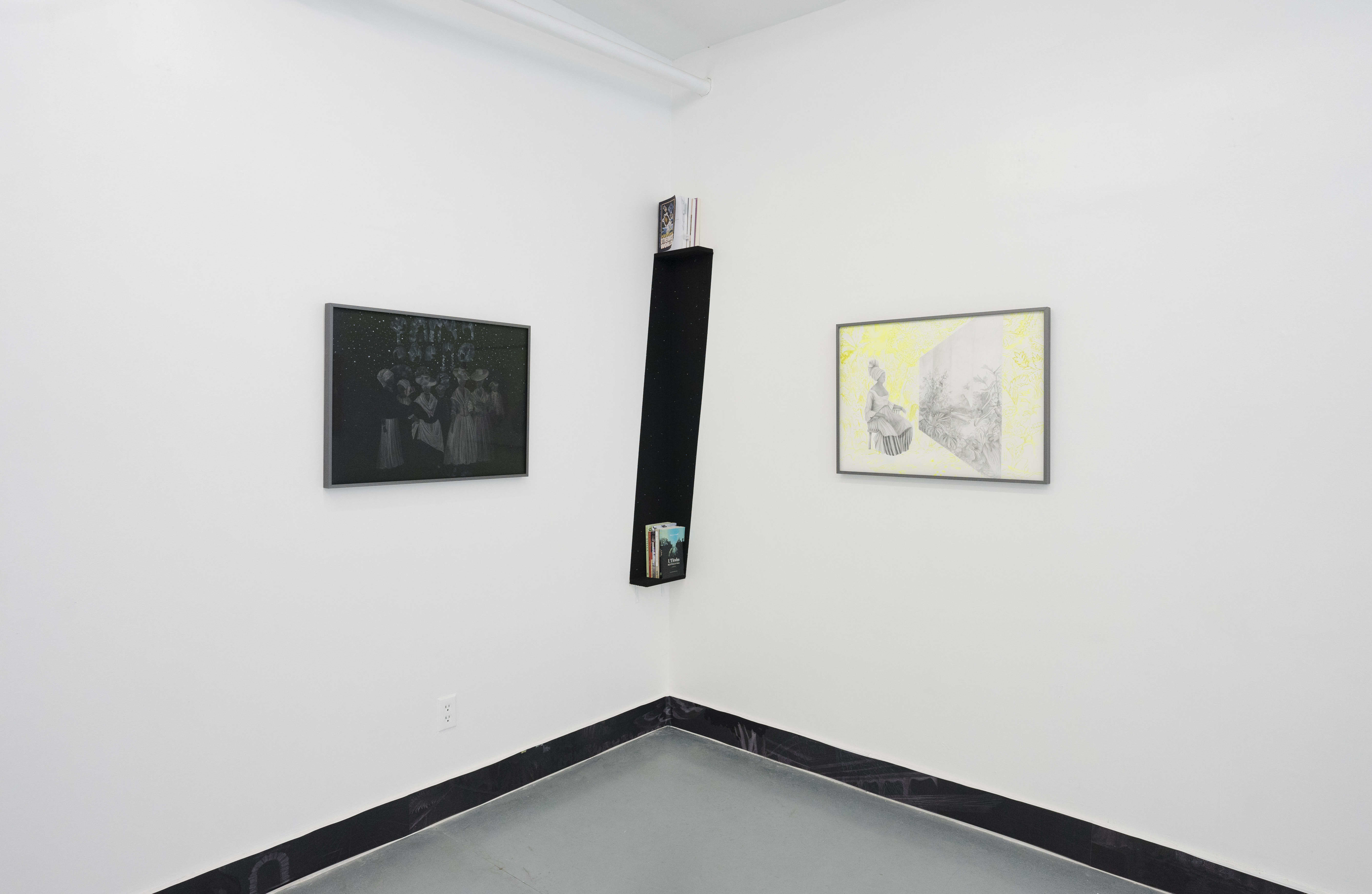
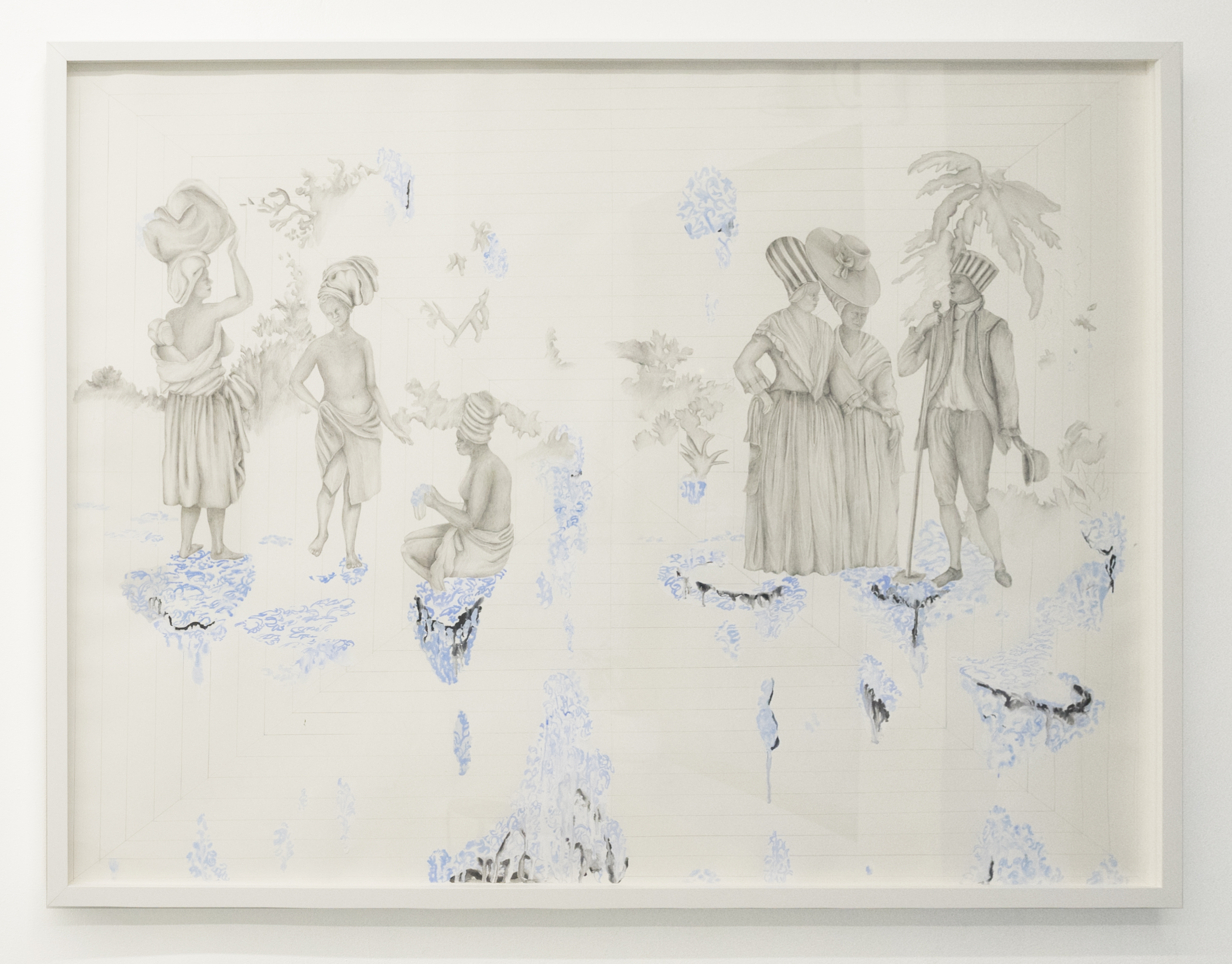
All Her Loves and All Her Disappointments
September 10 to October 31, 2021
September 10 to October 31, 2021
Rubber Factory is pleased to present a solo exhibition by Alex Callender, titled All Her Loves and All Her Disappointments.
Callender uses methods of drawing, painting, and installation to trace and remap historical materials as a means of exploring, with both criticality and care, how we might disentangle the interwoven relations of race, gender, and capitalism. Drawing largely from archival sources, her work engages the mythic and residual forms of coloniality to think about ways we orient ourselves to the past. Using different visual modes of annotation, hybrid narratives, and speculative storytelling, Callender recontextualizes static and seemingly fixed renderings of history to consider their relationship to social forces like scale, time, and memory.
All Her Loves and All Her Disappointments considers how identities were formed in love and in resistance to the brutality of colonial worldmaking and the scaffolding built in those systems that still haunts us. In these narratives characters draw us into their environments but also have the power to elide total visibility and the illusion of one linear historical narrative. Weaving together archival material and varied temporal histories of the Black Atlantic, Callender envisions spaces of intimacy in the lives of women captured by the historical imaginary. Suggestive of formal portraiture as a canonical framework that situates the Western liberal subject, Callender resists this motif and rethinks portraiture as a site to question historical legibility, creating a world where figures possess an interiority that cannot be represented except by the night sky. Through moments moving toward abstraction, absences, and multiple embodiments, these figures ask one to think about self, collective identities, power, and the (in)visible labor embodied in colonial Caribbean imaging and its rendering of asymmetrical social relationships that constitute words like citizen, markets, and freedom in our present. Or, as historian Lisa Lowe writes, “the economy of affirmation and forgetting”.
The works are rendered through layers of graphite and paint, translucency and opacity, historicity and unknowing, through which silhouetted figures may become a portal or a border. There is a contiguous thread in Western painting history that embeds the representation of people and the burgeoning visuality of liberal freedom with textiles, whether as luxury, beauty and self-autonomy, a metaphor of social mobility, or a reflection of enslavement and violent global labor systems. The design and fold of fabric holds the contradictions and technologies of the colonial project. In these works cloth, or the implication of its surface, becomes a topography to think about the intertwined space of personal agency, hemispheric trade, and the architecture of racial imagination. In The Edges of Time Sit With Each Other, a seated woman from the plantation landscape of Agostino Brunias sits facing a section of flowering wallpaper from Vues du Brésil. The early 19th-century French panoramic wallpaper depicted scenes, some originally drafted as ethnographic studies or travelogues by colonial Europeans abroad, thus re-presenting people who existed on the margins of colonial time. This panoramic imagery became a visual way of transporting people as ideas through time and into a commodity form commingled with Western political optics of gender and race. In recent works, digital patterning, generated by algorithms mapped over the surface of drawings that collage histories of free trade, are then layered over figures who confront the aftermath of those policies.
There is a strange seduction in looking toward archives thinking that one may get to the bottom of something, some place or beginning that can be understood absolutely; instead there grows an aching urgency to make visible all those same contradictions that govern our present.
Along with the selected readings presented in the exhibition, the artist gathered resource material in the making of this exhibition from the Barbados Museum and Historical Society, the National Archives of Trinidad and Tobago, the Alma Jordan Library archives in Trinidad, the Bordeaux Municipal Archives, the Musée du Papier Peint in France, and the Smithsonian Museum of American History archives in Washington, DC.
Press
October 2021, The Brooklyn Rail